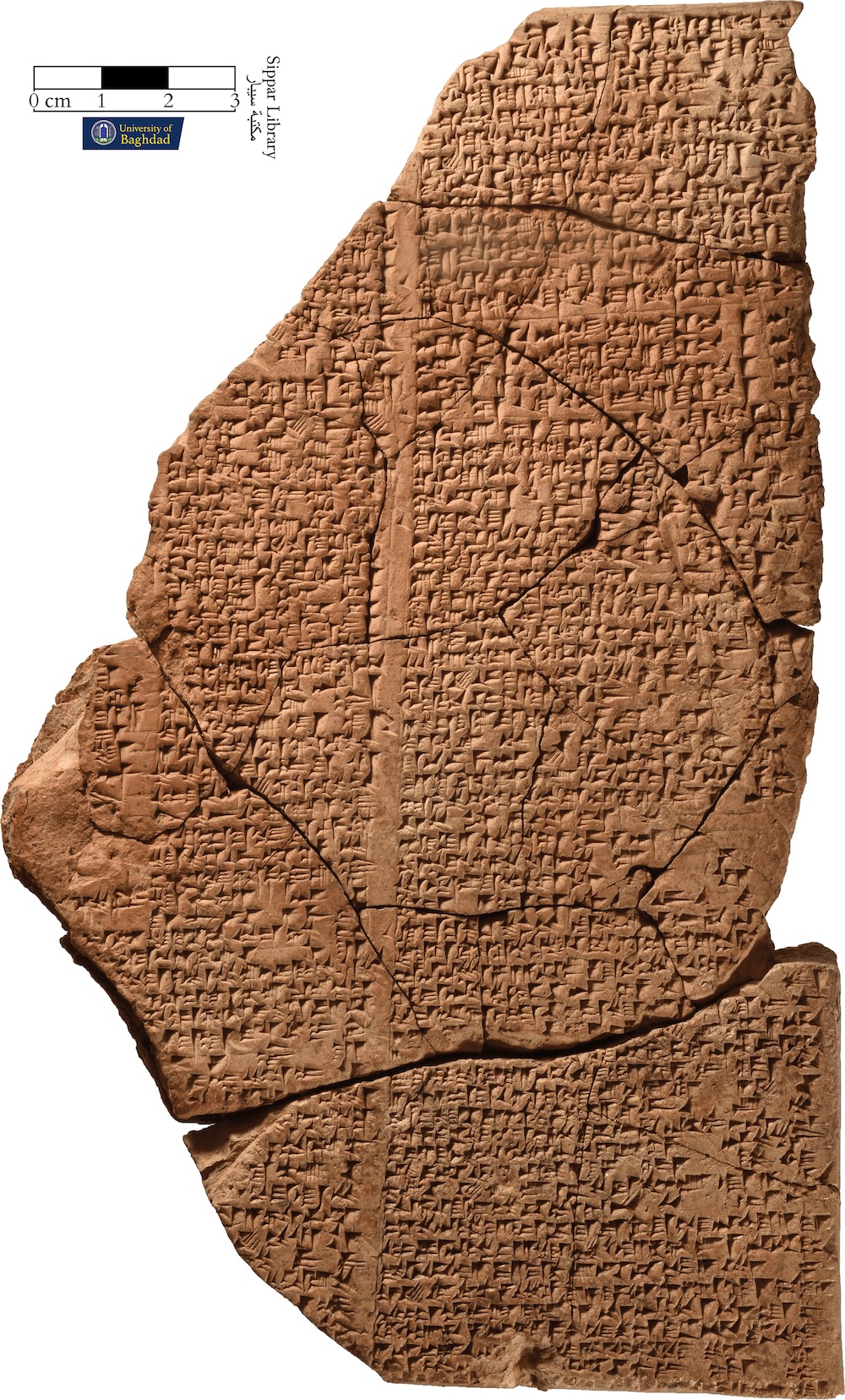At its peak some 3,000 years ago, the ancient Mesopotamian city of Babylon was the largest metropolis on Earth. Renowned for their literacy, the city's residents left behind stacks of cuneiform tablets in the Sippar Library.
While many of the ancient records remain, their fractured nature requires a painstaking effort in solving the world's hardest jigsaw puzzle.
Assyriologists Anmar Fadhil, from the University of Baghdad, and Enrique Jiménez, from Ludwig Maximilian University of Munich, have now found a 250-line hymn in praise of the ancient city by comparing text scattered across numerous fragments on tablets.
"It's a fascinating hymn that describes Babylon in all its majesty and gives insights into the lives of its inhabitants," Jiménez explains.
Related: Ancient Tablet Etched With Mysterious Language Found in Georgia
"It was written by a Babylonian who wanted to praise his city. The author describes the buildings in the city, but also how the waters of the Euphrates bring the spring and green the fields. This is all the more spectacular as surviving Mesopotamian literature is sparing in its descriptions of natural phenomena."
The hymn also reveals details about Babylonian women, of whom little else is known.

"The passage has great importance for understanding the roles played by the various classes of priestesses: ugbakkātu, nadâtu, and qašdātu," Fadhil and Jiménez write.
"The priestesses are particularly virtuous but, in contrast to the active role of men in protecting the helpless, the main virtue praised in women is devotion and discretion."
By digitizing Babylon's cuneiform text fragments, the team traced copies of the hymn across 20 tablets from the 7th to 2nd or 1st centuries BCE; a process that, according to Jiménez, previously would have taken decades.
This process even allowed them to piece together parts of the hymn that were missing from the first tablet.
"Using our AI-supported platform, we managed to identify 30 other manuscripts that belong to the rediscovered hymn," he says. "The hymn was copied by children at school. It's unusual that such a popular text in its day was unknown to us before now."
With the same hymn being found on so many clay tablets, the researchers think the hymn may be a 'classic', one students may have even committed to memory as part of their education.
Read a translated excerpt of the hymn below:
"The Euphrates is her river – established by wise lord Nudimmud –
It quenches the lea, saturates the canebrake,
Disgorges its waters into lagoon and sea,
Its fields burgeon with herbs and flowers,
Its meadows, in brilliant bloom, sprout barley,
From which, gathered, sheaves are stacked,
Herds and flocks lie on verdant pastures,
Wealth and splendor – what befit mankind –
Are bestowed, multiplied, and regally granted."
The research is published in Iraq.
